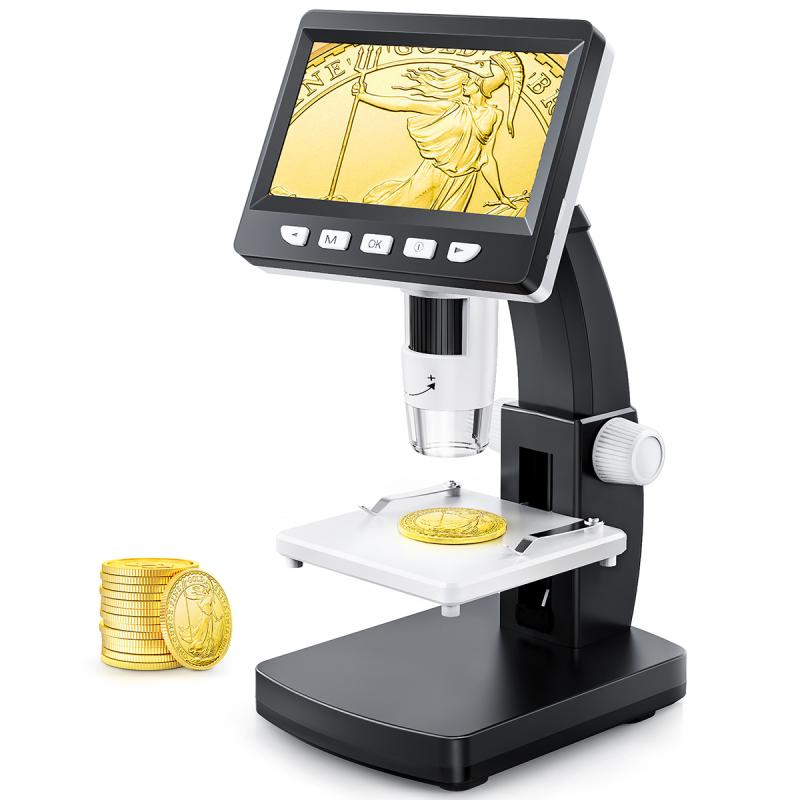What Does Malaria Look Like Under A Microscope ?
Under a microscope, malaria appears as small, single-celled organisms known as Plasmodium. These parasites have a distinct appearance depending on the stage of their life cycle. In the blood, the most commonly observed stage is the ring stage, where the parasite appears as a small, round structure with a dark dot in the center. As the parasite matures, it transforms into a larger form with a distinctive shape, often described as resembling a crescent or banana. This stage is known as the trophozoite or schizont stage. Additionally, in some species of Plasmodium, the mature form of the parasite can be observed as a cluster of small dots, known as merozoites, within a red blood cell. Overall, the microscopic examination of blood samples is an important diagnostic tool for identifying and confirming cases of malaria.
1、 Plasmodium parasites in red blood cells during malaria infection.
Malaria is a life-threatening disease caused by the Plasmodium parasite, which is transmitted to humans through the bite of infected female Anopheles mosquitoes. When examining a blood sample under a microscope, the presence of Plasmodium parasites can be observed within the red blood cells during a malaria infection.
The appearance of Plasmodium parasites under the microscope varies depending on the species of the parasite. The most common species that infect humans are Plasmodium falciparum, Plasmodium vivax, Plasmodium malariae, and Plasmodium ovale. Each species has distinct characteristics that can be observed under the microscope.
In general, Plasmodium parasites appear as small, round or oval-shaped structures within the red blood cells. They have a dark-staining nucleus and cytoplasm, which gives them a characteristic appearance. The parasites can be seen at different stages of their life cycle, including the ring stage, trophozoite stage, and schizont stage.
During the ring stage, the parasite appears as a small ring-shaped structure within the red blood cell. As the parasite matures, it progresses to the trophozoite stage, where it grows in size and develops into a larger structure with a more prominent nucleus. Finally, during the schizont stage, the parasite undergoes multiple divisions and forms multiple daughter cells, which can be observed as clusters within the red blood cells.
It is important to note that the latest advancements in microscopy techniques, such as fluorescence microscopy and molecular techniques, have allowed for more accurate and detailed visualization of Plasmodium parasites. These techniques can provide additional information about the specific species of the parasite and its drug resistance patterns, aiding in the diagnosis and treatment of malaria.
In conclusion, when examining a blood sample under a microscope, Plasmodium parasites can be observed within the red blood cells during a malaria infection. The appearance of the parasites varies depending on the species, but they generally appear as small, round or oval-shaped structures with a dark-staining nucleus and cytoplasm. The latest microscopy techniques have further enhanced our understanding of the parasite's characteristics, aiding in the diagnosis and management of malaria.

2、 Distinctive ring-shaped structures in infected red blood cells.
Malaria is a parasitic disease caused by the Plasmodium parasite, which is transmitted to humans through the bite of infected female Anopheles mosquitoes. When examining a blood sample infected with malaria under a microscope, distinct characteristics can be observed.
One of the most notable features of malaria under a microscope is the presence of ring-shaped structures within infected red blood cells. These structures are known as "trophozoites" and are the early stage of the parasite's development within the host. Trophozoites appear as small, round structures with a dark center and a lighter outer ring. They are often described as resembling a signet ring.
As the infection progresses, the trophozoites mature into "schizonts," which are larger and contain multiple nuclei. Schizonts can be observed as clusters of dark dots within the red blood cells. Eventually, the schizonts rupture, releasing new parasites that can infect more red blood cells and continue the cycle of infection.
It is important to note that the appearance of malaria under a microscope can vary depending on the species of Plasmodium causing the infection. There are several species that can infect humans, including Plasmodium falciparum, Plasmodium vivax, Plasmodium malariae, and Plasmodium ovale. Each species has its own distinct characteristics, such as the size and shape of the parasites, which can aid in identifying the specific type of malaria infection.
It is worth mentioning that advancements in microscopy techniques and diagnostic tools have allowed for more accurate and rapid detection of malaria. For instance, fluorescent dyes can be used to stain the parasites, making them more visible and easier to identify. Additionally, molecular techniques, such as polymerase chain reaction (PCR), can be employed to detect and differentiate between different species of Plasmodium with high precision.
In conclusion, malaria under a microscope appears as distinctive ring-shaped structures, known as trophozoites, within infected red blood cells. These structures are characteristic of the early stage of the parasite's development. However, it is important to consider that the appearance may vary depending on the species of Plasmodium causing the infection. Advancements in microscopy and diagnostic techniques have greatly improved our ability to detect and identify malaria parasites accurately.

3、 Clusters of malarial parasites in various stages of development.
Malaria is a life-threatening disease caused by the Plasmodium parasite, which is transmitted to humans through the bite of infected female Anopheles mosquitoes. When examining a blood sample under a microscope, the presence of malaria can be identified by observing clusters of malarial parasites in various stages of development.
The most common species of Plasmodium that infect humans are Plasmodium falciparum, Plasmodium vivax, Plasmodium malariae, and Plasmodium ovale. Each species has distinct characteristics when observed under a microscope.
In the early stages of infection, the parasites appear as small, ring-shaped structures within red blood cells. These rings gradually grow and develop into larger forms known as trophozoites. Trophozoites have a distinctive appearance with a dark-staining nucleus and cytoplasm that contains granules.
As the infection progresses, the trophozoites mature into schizonts, which are larger and contain multiple nuclei. Schizonts eventually rupture, releasing merozoites into the bloodstream. Merozoites then invade new red blood cells, continuing the cycle of infection.
In addition to the asexual stages, some species of Plasmodium also have sexual stages known as gametocytes. Gametocytes are larger than the asexual forms and have a characteristic crescent or banana shape. These sexual stages are important for the transmission of the parasite back to mosquitoes, completing the life cycle.
It is worth noting that the appearance of malaria parasites under a microscope can vary depending on the species, the stage of infection, and the individual's immune response. Therefore, laboratory technicians with expertise in malaria diagnosis are essential for accurate identification.
It is important to mention that advancements in technology have led to the development of rapid diagnostic tests (RDTs) for malaria, which can provide quick and reliable results without the need for microscopic examination. RDTs detect specific antigens produced by the malaria parasite, making them a valuable tool in areas with limited access to microscopy facilities. However, microscopic examination remains crucial for confirming the diagnosis and monitoring the progression of the disease.

4、 Dark-stained malarial pigment within infected red blood cells.
Malaria is a parasitic disease caused by the Plasmodium parasite, which is transmitted to humans through the bite of infected female Anopheles mosquitoes. When examining a blood sample under a microscope, the presence of malaria can be identified by observing certain characteristic features.
One of the key indicators of malaria under a microscope is the presence of dark-stained malarial pigment within infected red blood cells. This pigment, known as hemozoin, is a byproduct of the parasite's digestion of hemoglobin. It appears as dark, granular material within the red blood cells and is often described as resembling black or brown dots.
The appearance of infected red blood cells can vary depending on the species of Plasmodium causing the infection. For example, in Plasmodium falciparum, the most severe form of malaria, infected red blood cells may show irregular shapes and sizes, with the presence of multiple parasites within a single cell. In other species like Plasmodium vivax or Plasmodium ovale, infected red blood cells may exhibit a more rounded appearance.
In addition to the presence of malarial pigment and changes in red blood cell morphology, other features may also be observed under the microscope. These include the presence of ring-like structures within the red blood cells, known as trophozoites, which represent the growing stage of the parasite. Mature forms of the parasite, called schizonts, may also be visible, characterized by the presence of multiple nuclei within the red blood cells.
It is important to note that the microscopic appearance of malaria can vary depending on the stage of infection, the species of Plasmodium, and the individual's immune response. Therefore, laboratory confirmation through specialized staining techniques or molecular tests is often necessary for accurate diagnosis.
It is worth mentioning that advancements in technology and research may lead to new insights and refinements in the understanding of malaria under a microscope. Therefore, the latest point of view may include more detailed information about the specific characteristics of different Plasmodium species and their variations in appearance.





































